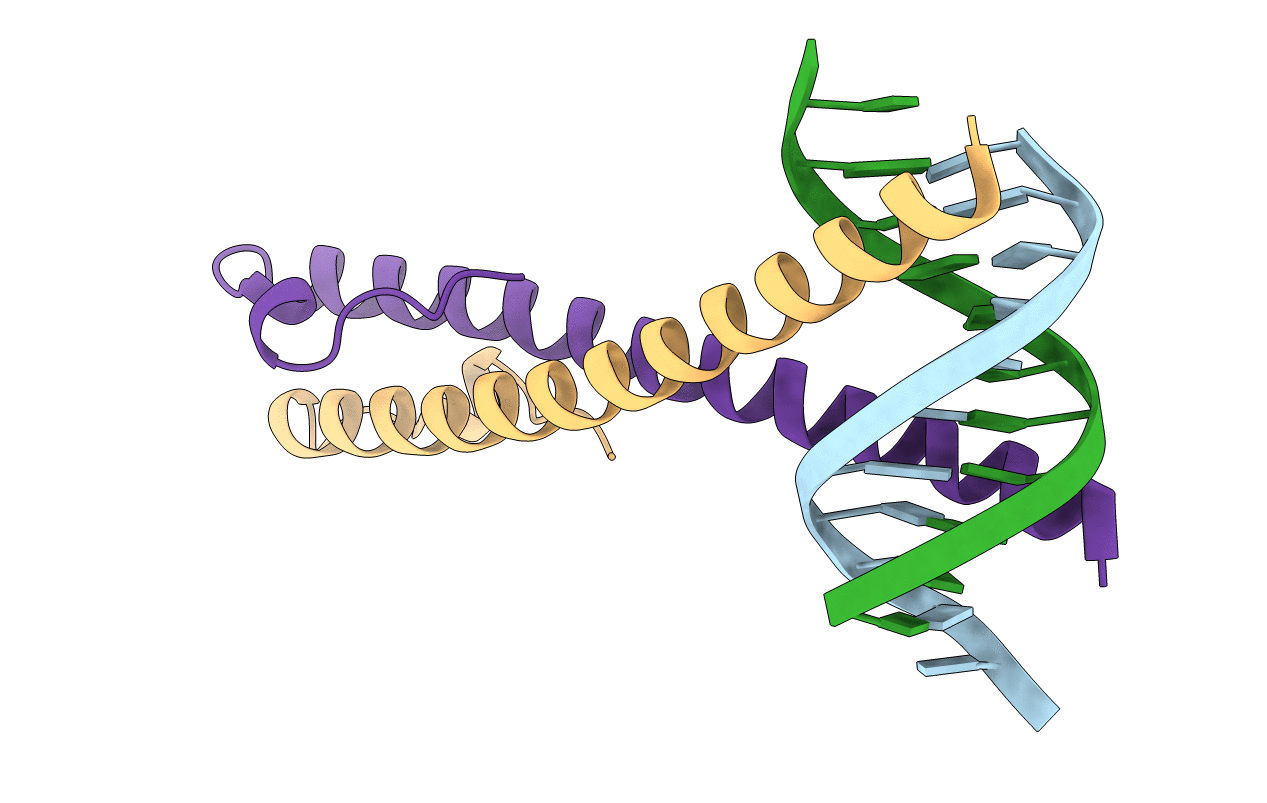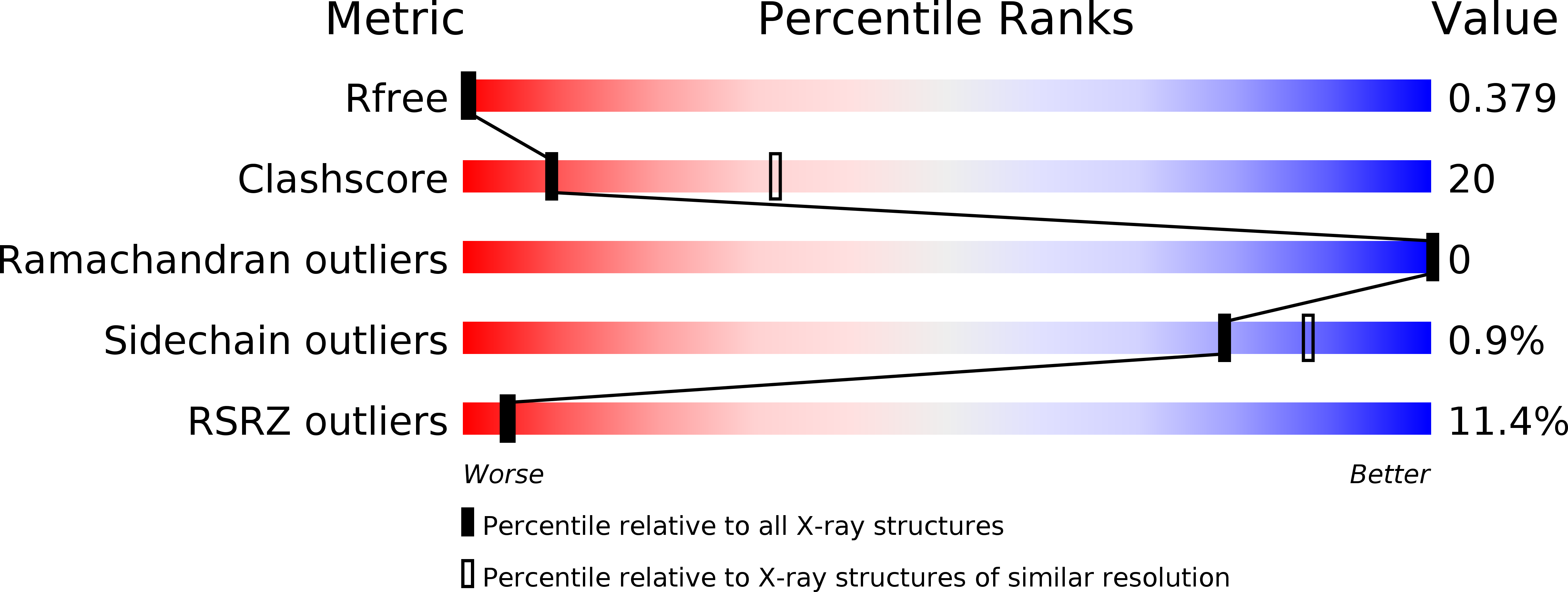
Deposition Date
2005-12-13
Release Date
2006-02-21
Last Version Date
2023-12-13
Entry Detail
PDB ID:
2C9N
Keywords:
Title:
Structure of the Epstein-Barr virus ZEBRA protein at approximately 3. 5 Angstrom resolution
Biological Source:
Source Organism:
HUMAN HERPESVIRUS 4 (Taxon ID: 10376)
Host Organism:
Method Details:
Experimental Method:
Resolution:
3.30 Å
R-Value Free:
0.36
R-Value Work:
0.36
R-Value Observed:
0.36
Space Group:
C 1 2 1


